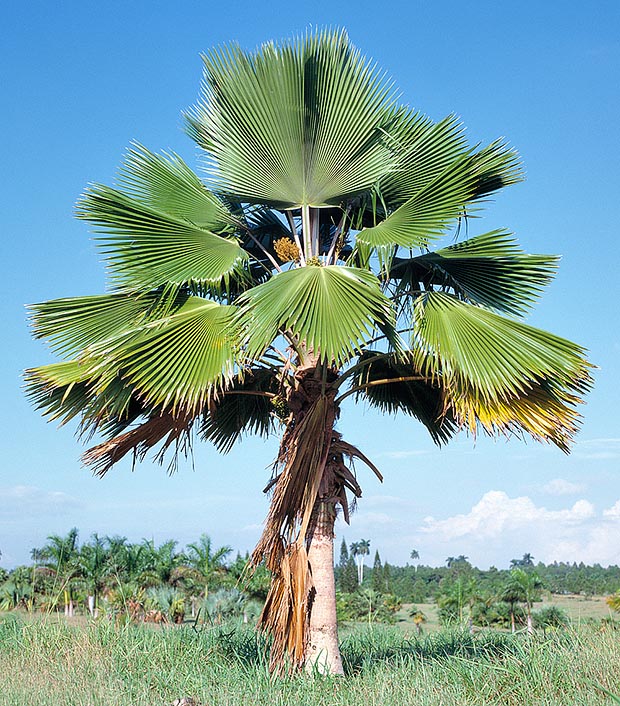Family : Arecaceae

Text © Pietro Puccio

English translation by Mario Beltramini

Seems native to Tonga and Fiji forests. For gardens in the Tropics © Giuseppe Mazza
The name of the genus was dedicated to the first British Consul in the Fiji Islands (1858), William T. Pritchard. The name of the species refers to the area of origin (Pacific Ocean).
It is commonly known as: “Fiji fan palm” (English); “palmier de Fiji” (French); “palmera de Fiji” (Spanish); “palmeira-leque-de-Fiji” (Portuguese); “Fiji-Fächerpalme” (German).
It shows a solitary trunk tall up to 15 m, with a diameter of 25-30 cm, marked by the close scars of the foliar petioles; the leaves, on an unarmed petiole, 1 m long, are costapalmate, of pale green colour, about 2 m wide, and incised for about one third of their length in several rigid and pointed segments.
The inflorescence, very ramified, comes out between the leaves and carries hermaphrodite yellow-coloured flowers, the fruits are globose, of about 1 cm of diameter, of red colour tending to the dark brown when ripe. It reproduces by seed which germinates in about 2 months.
Plant of great ornamental and landscape value, is cultivable in the tropical regions, and marginally, in the subtropical ones, particularly humid, as it does not tolerate temperatures close to 0 °C, unless for a very short period, and the lack of humidity.
Synonyms : Washingtonia pacifica (Seem. & H.Wendl.) Kuntze (1891); Eupritchardia pacifica (Seem. & H.Wendl.) Kuntze (1898); Styloma pacifica (Seem. & H.Wendl.) O.F.Cook, (1915); Pritchardia pacifica var. samoensis Becc. (1913); Pritchardia pacifica var. marquisensis F.Br. (1931).
→ For general notions about ARECACEAE please click here.
